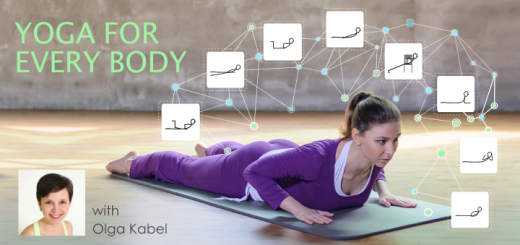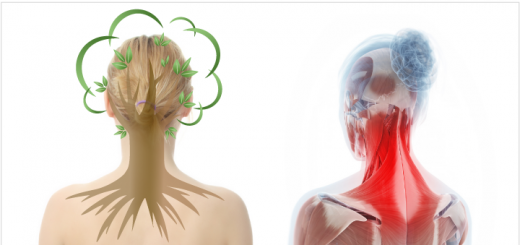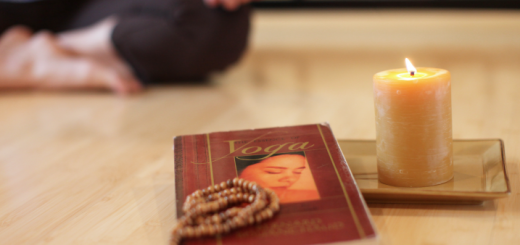How to balance vata in your yoga practice
2Ayurveda says that when we pay conscious attention to the choices we make, activities we engage in, and foods we eat, we can restore and maintain the balance of fundamental qualities within our systems. Our yoga practice can play a significant role in managing the state of our doshas; it can either balance out our inherent attributes or aggravate them. Today we will begin our conversation about the appropriate practices for specific types of ayurvedic imbalances; let’s start with vata.

Two main qualities that define vata are mobility (particularly the movement of nerve impulses) and dryness. When unbalanced, mobility can turn into haphazard movement that leads to chaos, disturbing all three doshas. In excess, dryness can lead to rigidity and brittleness in the body and mind. That is why managing vata energy usually includes some form of:
- Controlling intake (managing the kind of sensory information that gets in).
- Establishing a steady rhythm of breathing and movement.
- Increasing moisture (or lubrication) in the joints and tissues.
Folks with high levels of vata in their systems usually have a great deal of flexibility and agility at a young age but often lack energy and stamina. They easily develop rigidity and stiffness as they age. Vata types suffer most from arthritis. They tend to be cold, with dry skin and cracking joints, and have poor circulation.
There are two distinctive types of vata yoga practitioners:
- Those who consistently engage in physical activity and maintain their agility and flexibility into old age. The challenge for this type of practitioner is to maintain stability in the joints and not stretch too much.
- Those who neglect their bodies and get too focused on their minds. Ignoring the body often leads to poor body awareness and lack of mind-body coordination. Combined with the tendency toward rigidity and brittleness, this type of practitioner can easily hurt themselves when starting a yoga practice or doing too much too soon.
Below are some general recommendations of how to use your yoga practice to keep your vata in balance. Most of the time, it is not so much about which poses you choose, but how you do them, how you arrange them, the pace of your practice, and where you choose to direct your attention.

GENERAL GUIDELINES FOR YOGA PRACTICE TO KEEP VATA IN BALANCE:
- Mental attitude: Never rush or hurry into practice; slow down and deepen the breath before starting any movement.
- Sufficient warm-up: Warm up the body gradually, improving the circulation and loosening the joints.
- Avoid overexertion: Exercise to the point of light sweat only and have good fluid intake.
- Avoid overstretching: Repetitive movement to the limits of your joints’ range of motion can destabilize the ligaments and lead to loss of muscle strength.
- Sense of completion: Avoid ending the practice abruptly or hurrying off to the next activity.
ASANA SUGGESTIONS
- Maintain mobility of the spinal column. Practice moving the spine in every direction (forward, backward, laterally, and twisting)
- Pay special attention to the pelvic region and colon; these are the sites of vata accumulation. Aim to release tension in the hips, create support for the lumbar spine, and stabilize your sacroiliac joints.
- Choose poses that develop strength and stability while making you feel calmer (simple standing poses, gentle backbends, forward bends, seated postures)
DESIRED OUTCOME OF ASANA PRACTICE
An ideal vata balancing practice would make the practitioner feel stable, warm, and calm, with tension released from the lower abdomen. It would help the practitioner feel peaceful and their emotions steady and grounded, with both space and energy left for meditation.
PRANAYAMA RECOMMENDATIONS
- Energy stimulation: Right nostril breathing; focus on inhalation and retention of breath (holding the breath in).
- Grounding effect: Prana/Apana Vayu work
- Breathing consistency: Simple repetitive pranayama practice to establish rhythm and structure
- Energy containment: Anchoring attention on the central channel (along the spine), working with nadis and chakra locations.
MEDITATION SUGGESTIONS
Vata-focused meditation needs to manage haphazard mental activity and an inherent tendency for fear and anxiety.
- Proper mental anchor: When there is excess vata in the system, it’s easy to space out and get lost in thoughts or daydreaming. It’s best to anchor the mind to a simple mantra or vivid visualization to concentrate. It is also helpful to anchor the attention on specific areas within the body.
- Meditation focus on letting go of worry, fear, and anxiety, reframing negative thinking, and restoring faith.
- Imagery that counteracts dryness, coldness, and spaciness: Earth, water, fire; lake, ocean, flowers; the sun at dawn; warm gold color.
- Mantras that affirm the essential peace and fearlessness of the inner self.
Below is an example of a vata-managing yoga practice that focuses on counteracting the quality of dryness by using images of water and swimming. This yoga practice focuses on mobilizing your spine, releasing tension in your hips and abdomen, and creating an overall sense of stability and calm. We take time to breathe and move so that you can walk away from this practice feeling warm, stable, nourished, and peaceful.
Next time we will discuss strategies for balancing pitta—tune in!
[jetpack_subscription_form]
References
-
Yoga Therapy: A Guide to the Therapeutic Use of Yoga and Ayurveda for Health and Fitness by A.G. Mohan and Indra Mohan (affiliate link)
-
Yoga and Ayurveda: Self-Healing and Self-Realization by David Frawley (affiliate link)
- The Chemistry of Joy: A Three-Step Program for Overcoming Depression Through Western Science and Eastern Wisdom by H. Emmons, M.D. (affiliate link)



















loved this practice…. excellent tone and explanation!
Great to hear that Ruby!